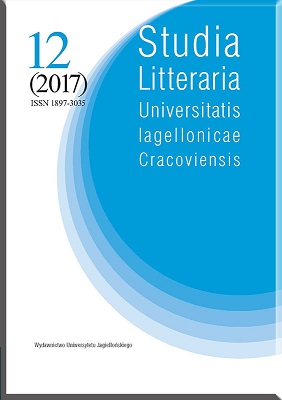Rewriting Chaucer’s Wife of Bath’s Tale from Dryden, through Voltaire, to Niemcewicz: Medievalism or Modernisation?
Rewriting Chaucer’s Wife of Bath’s Tale from Dryden, through Voltaire, to Niemcewicz: Medievalism or Modernisation?
Author(s): Monika CoghenSubject(s): Cultural history, Fiction, French Literature, 18th Century, Translation Studies
Published by: Wydawnictwo Uniwersytetu Jagiellońskiego
Keywords: Chaucer; The Wife of Bath’s Tale; Voltaire; Ce qui plait aux dames; Julian Ursyn Niemcewicz; Co się damom podoba; translation; adaptation; rewriting; gender; medievalism;
Summary/Abstract: The aim of this paper is to track down the fortunes of cross-cultural transmission of The Wife of Bath’s Tale in the course of the 18th century. The continental interest in the tale was sparked off by Dryden’s adaptation in his Fables, Ancient and Modern (1700). Dryden’s version was rewritten by Voltaire as Ce qui plait aux dames (1764), which in turn was translated into Polish by Julian Ursyn Niemcewicz, and appeared in his collection Pisma różne wierszem i prozą (Various Writings in Verse and Prose, vol. I, 1803) as Co się damom podoba (What Pleases the Ladies). This trajectory of the Polish reception of Chaucer’s tale confirms the characteristic pattern of adaptations and translations of English literary works into Polish – from English through French into Polish, though it is not typical of Niemcewicz’s practice as a translator as he was one of the very few Polish translators translating directly from the English at the time. Thus, paradoxically to the 21st-century reader, the first, to my knowledge, Polish adaptation of The Wife of Bath’s Tale does not reveal an interest in Chaucer but rather confi rms the dependence of late 18th- and early 19th-century Polish writers on French literary models. Likewise, differences in the representation of gender relationships between Chaucer’s romance and its eighteenthcentury versions reveal that the agenda of the eighteenth-century adapters was rather catering to the taste of their contemporaneous readers than engaging with medieval English culture.
Journal: Studia Litteraria Universitatis Iagellonicae Cracoviensis
- Issue Year: 12/2017
- Issue No: 3
- Page Range: 175-185
- Page Count: 11
- Language: English

